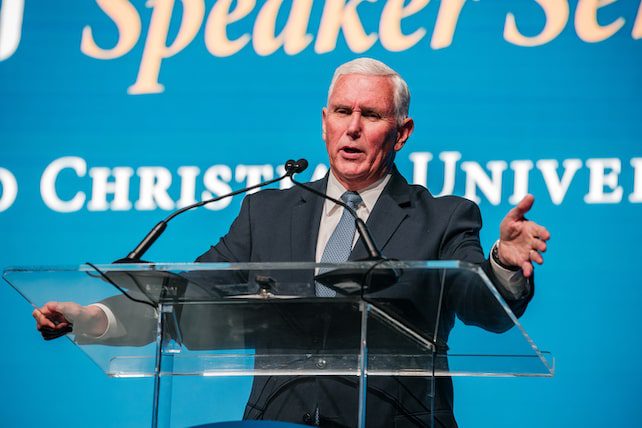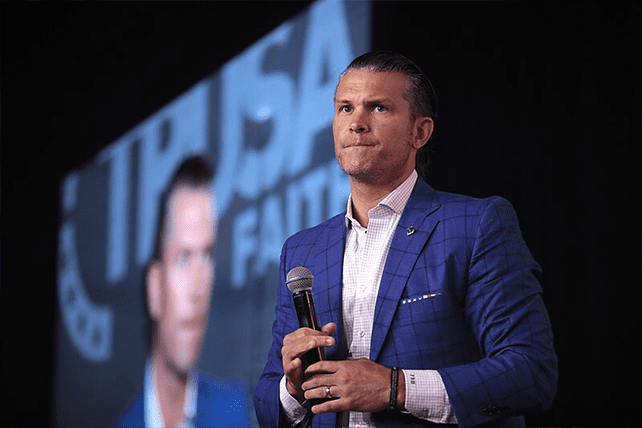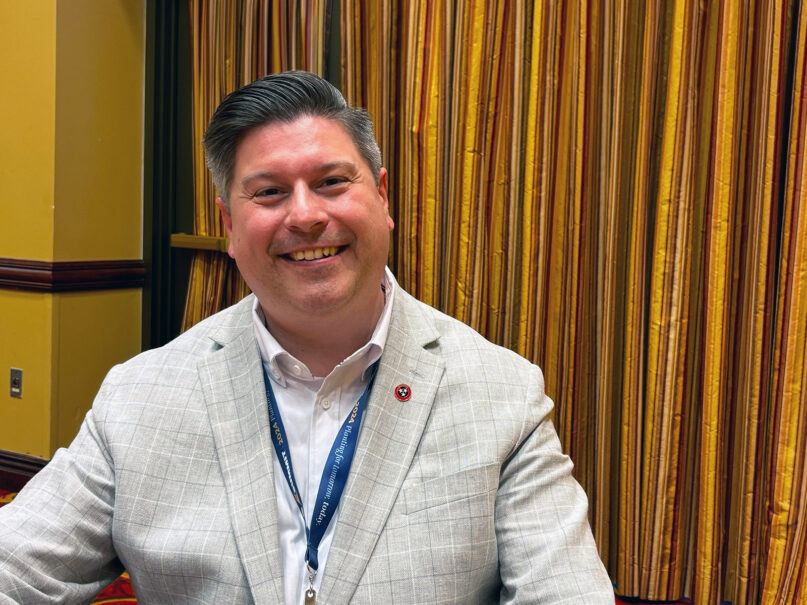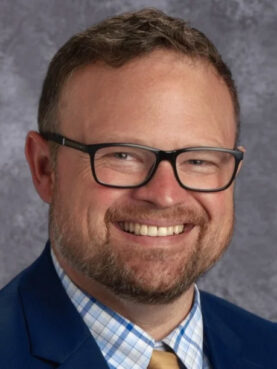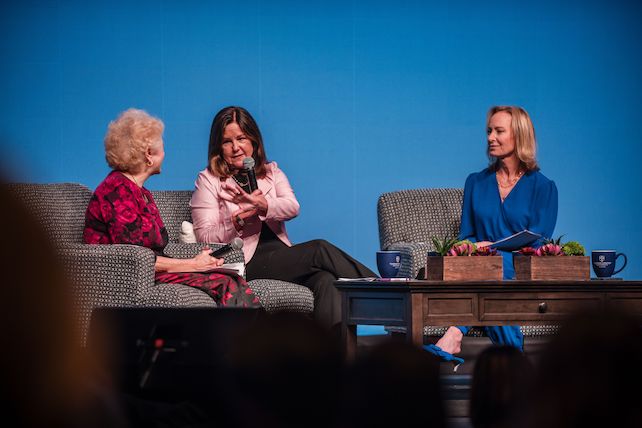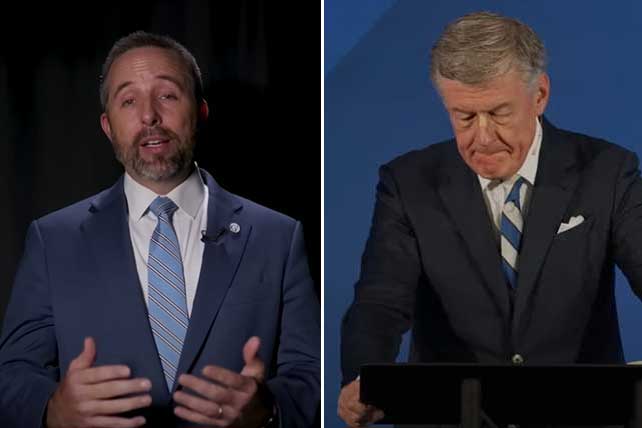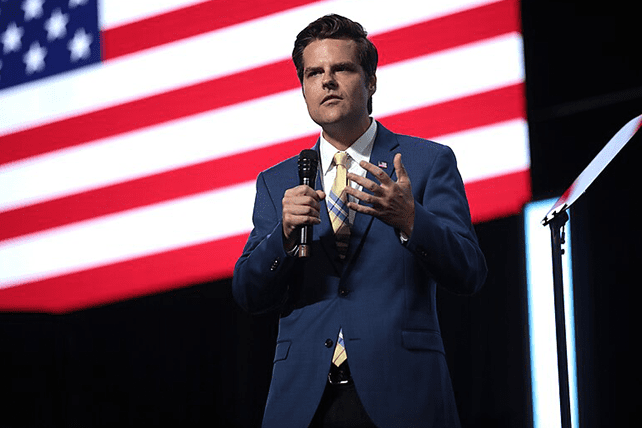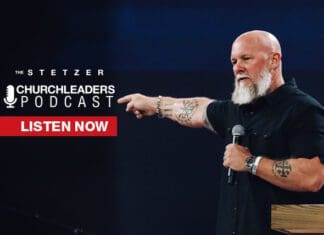(RNS) — Mike Huckabee’s journey to becoming the U.S. ambassador to Israel began 50 years ago.
The former Arkansas governor, presidential candidate and Fox News host first visited Israel with a friend on a tour of the Middle East not long after graduating from high school. “This is a place I’d never been, but I felt at home,” Huckabee said in a podcast interview at the National Religious Broadcasters convention earlier this year, about his experience as a teen.
“I felt an overwhelming spiritual reality of understanding this is the land that God has given to the Jews,” he told Paul Lanier, board chair of the International Fellowship of Christians and Jews, for the “Nourish Your Biblical Roots” podcast.
Huckabee said he began hosting his own tours of Israel in the 1980s and has visited the country more than 100 times. He’s a longtime supporter of pro-Israel groups like IFCJ — a nonprofit that seeks to strengthen ties between Christians and Jews and does humanitarian work in Israel — and has helped raise money for the group.
RELATED: Mike Huckabee, Former SBC Pastor, Tapped To Be Ambassador to Israel
Huckabee has also long articulated staunchly pro-Israel political views. As a candidate for president in 2008, Huckabee said he believed there is “no such thing as a Palestinian,” according to CNN. He argued that the very concept of Palestinian identity is “a political tool to try and force land away from Israel.”
When he ran for president again in 2015, he held a fundraiser in one of the Israeli settlements in the West Bank, which are considered illegal under international law.
In his conversation with Lanier, Huckabee compared the origin of Israel to the founding of the United States, saying both were started by people who moved to a new land to find peace and security. He also said the growth of Israel since 1948 is like biblical prophecies come true.
“I’ve seen Scripture come to life,” he said. “The desert has bloomed before my eyes.”
If confirmed by the Senate, Huckabee may be the first political appointee — as opposed to interim career foreign service officers — to come to the U.S. Embassy in Israel from a group known as Christian Zionists, who back Israel for theological as well as geopolitical reasons. (The current U.S. ambassador is Jack Lew, an American Jew who served as secretary of the Treasury under Barack Obama.)
Many Christian Zionists are millenarianists — they view the creation of the modern state of Israel as a necessary precondition for the second coming of Jesus and the apocalyptic purification of the world in the end times. Israel, along with the occupied territories it captured in 1967, is considered given by God to the biblical patriarch Abraham, who is told in the Book of Genesis, “God will bless those who bless you and curse those who curse you.”
Huckabee’s own biblical approach to Israel shows up in his habit of referring to the West Bank as “Judea and Samaria” — a way of signaling a belief that the land has always belonged to the Jewish people.
That divine patrimony, believers say, should shape how nations, including the United States, treat Israel and how individual Christians should view the nation. Over the past 30 years, evangelicals, including Southern Baptists like Huckabee, but also growing groups of charismatic nondenominational Christians, have duly formed strong alliances with Israeli leaders and Prime Minister Benjamin Netanyahu in particular.
They give more to Israeli causes than Jewish Americans do and have formed strong support groups. With 5 million members, Christians United for Israel, led by San Antonio pastor John Hagee, is thought to be the largest pro-Israel nonprofit in the United States. In 2017, when then-President Donald Trump moved the U.S. Embassy in Israel from Tel Aviv to Jerusalem, the move was applauded by Christian Zionist supporters, and Hagee spoke at the dedication of the new embassy.
Mordechai Inbari, a professor of religion at the University of North Carolina at Pembroke, said Huckabee’s appointment as U.S. ambassador to Israel would be greeted “with open arms” by the Netanyahu government. “Huckabee belongs to the network of supporters of Netanyahu and his government among evangelicals and is considered to be a strong supporter of Israel,” said Inbari.
Huckabee was pressed by Israeli radio Wednesday (Nov. 13) on whether he believed the Trump administration would support annexation by Israel of the occupied territories, principally the West Bank, but also Gaza. He demurred but made it clear that he sees his job as following the decisions made by the president.
“There’s never been an American president,” he added, “that has been more helpful in securing an understanding of the sovereignty of Israel — from the moving of the embassy, recognition of the Golan Heights, and Jerusalem as the capital, no one has done more than president Trump and I fully expect that will continue,” Huckabee said.
Inbari, for one, didn’t think the new Trump administration would rush to see Israel annex the territories. Trump has shown a desire to expand the Mideast peace deal known as the Abraham Accords, inked in his first administration, to include Saudi Arabia. The accords, signed in 2020, normalized Israeli relations with the United Arab Emirates and Bahrain, and later Sudan and Morocco.




